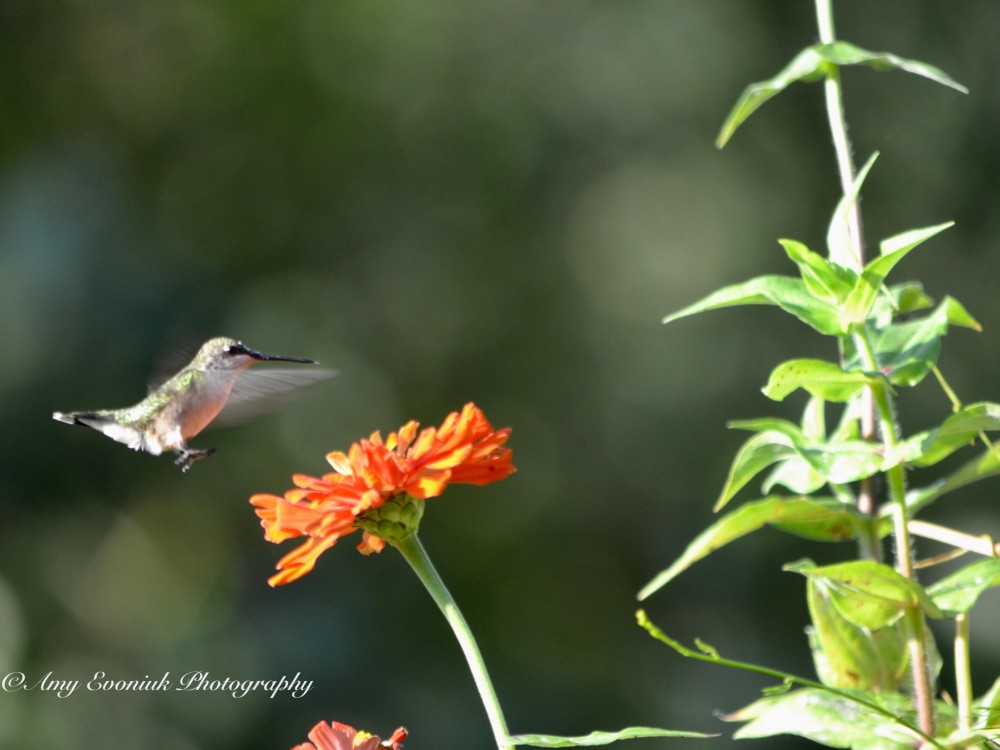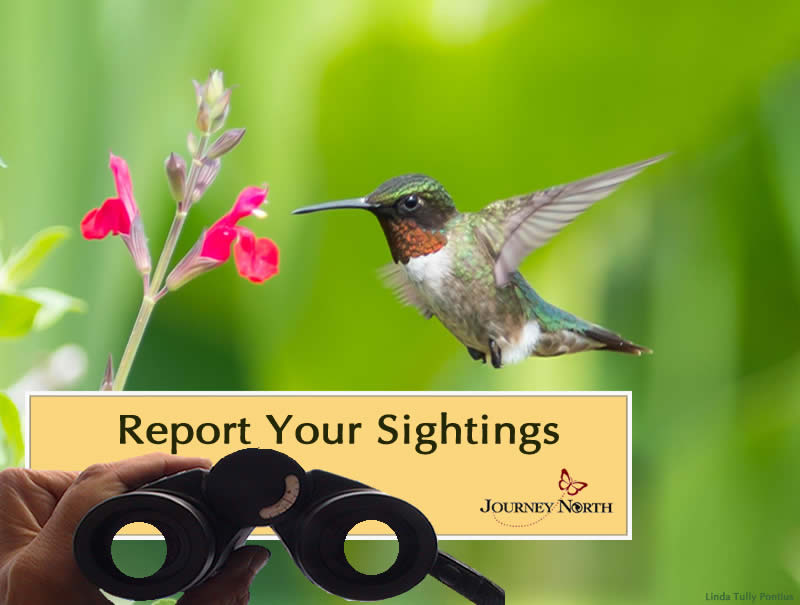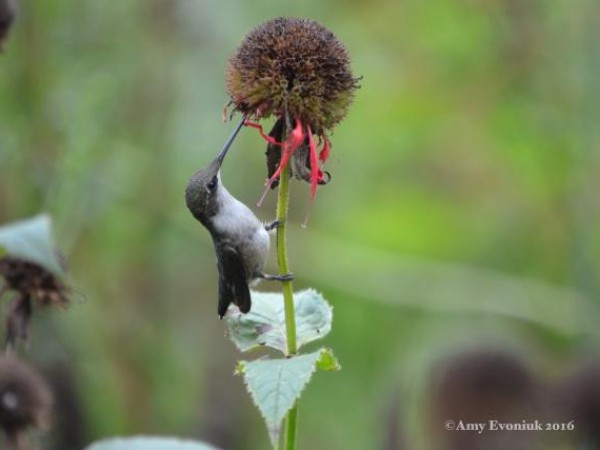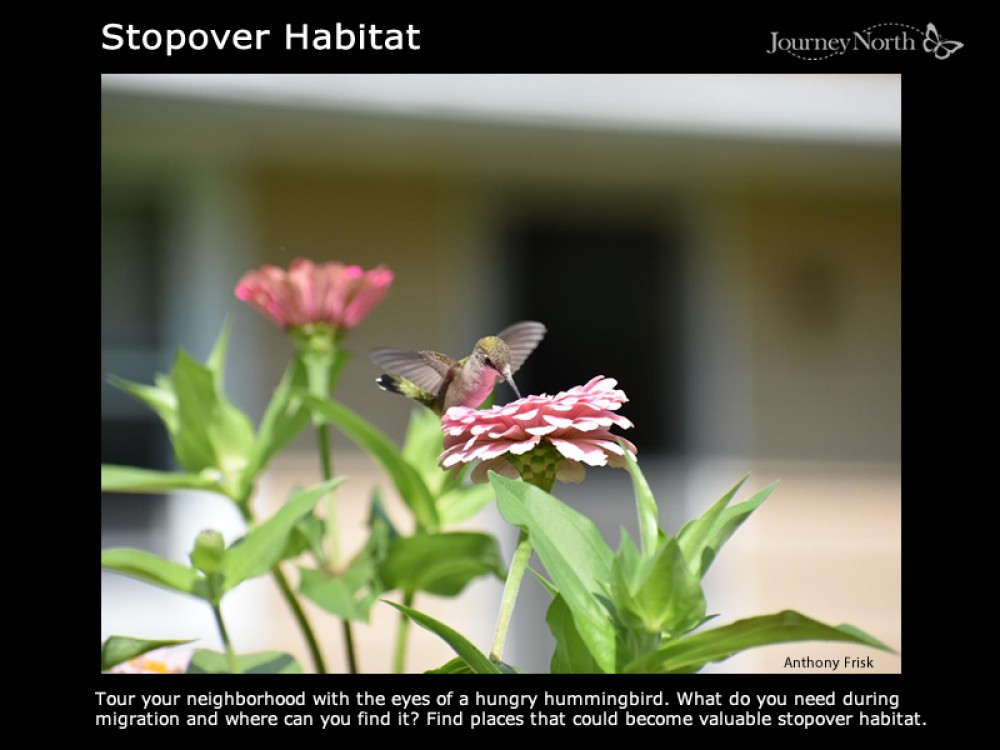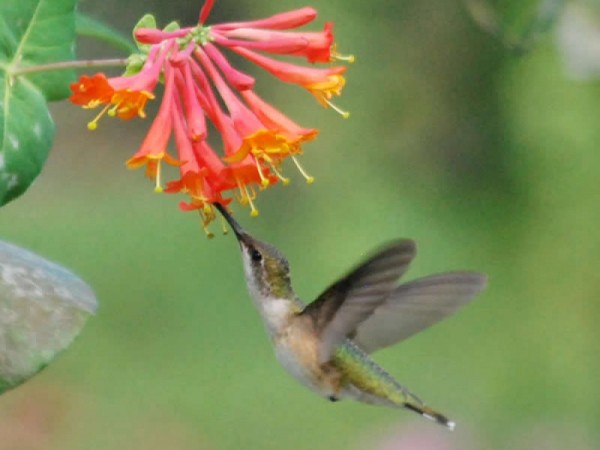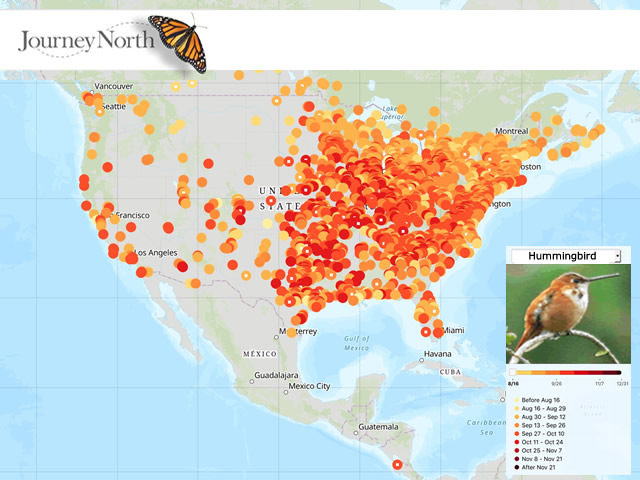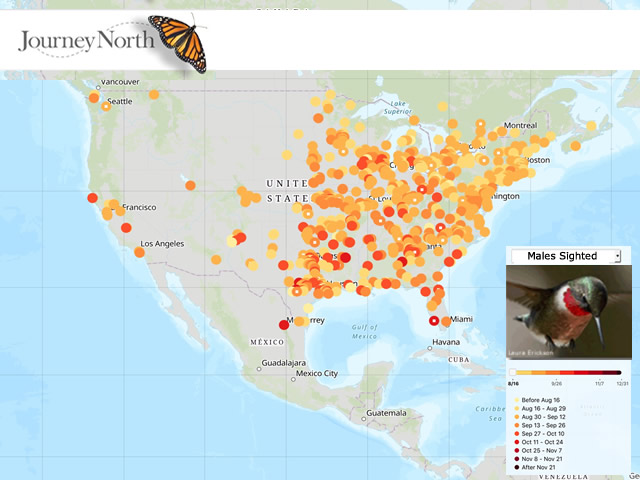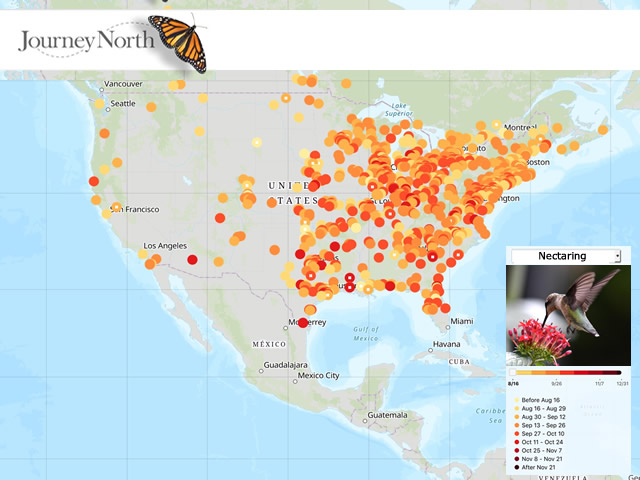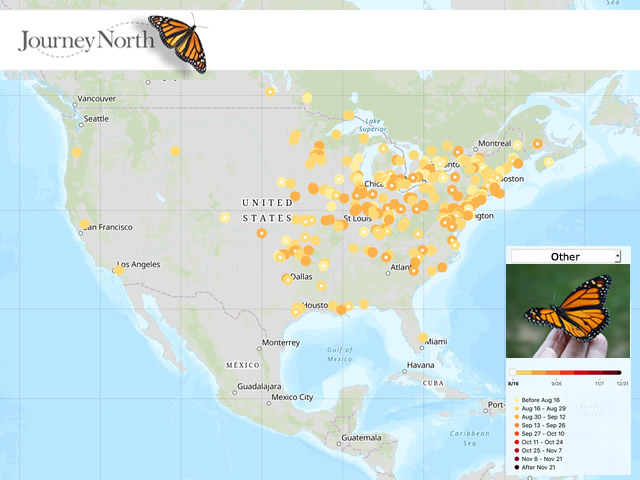Stop and Go
On the Move
From single-bird sightings in the north, to multiple arrivals in the south, hummers are on the move. Adult males are scarce in the north. The northernmost ruby-throat was reported in Minnesota. Texas was the state reporting the highest numbers, including this report of 100 hungry hummingbirds in Pasadena:
"Wow...there are so very many hummingbirds buzzing around in my garden this morning again, I cannot count them whatsoever. Many males, females & juveniles trying to get a fill from my many freshly filled feeders. WOW, what a sight!" Pasadena, Texas, 9/17/18
Stopover Sites and Survival
Thirsty, hungry and tired. In strange settings and unfamiliar places, our tiny travels must find everything they need for survival. They may only visit briefly; an hour or two can make a life or death difference. Migration is a perilous time of life.
How do hummers decide where to stop? Which resources are important? How long do they stay? Scientists study stopover ecology to answer questions like these. High quality stopover sites are critical for successful migration.
Welcome Hungry Travelers
Take a tour of your neighborhood with the eyes of a migrating hummingbird. Can you identify welcoming stopover sites where hungry hummers can rest and refuel?
Hummingbird Stopover Sites
Fall Migration 2018
Report at least once per week as long as hummingbirds are present. Do not report when you no longer see them.

